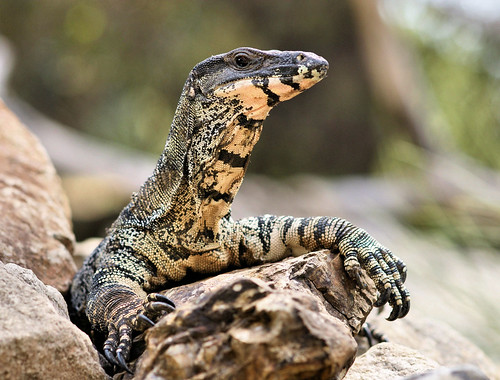Post by DinosaurMichael on Jun 18, 2012 6:59:11 GMT -5
Western Gorilla - Gorilla gorilla
The western gorilla (Gorilla gorilla) is a great ape and the most populous species of the genus Gorilla. Nearly all of the individuals of this taxon belong to the western lowland gorilla subspecies (G. g. gorilla) whose population is approximately 95,000 individuals. There are fewer than 300 of the only other western gorilla subspecies, the Cross River gorilla (G. g. diehli). The western gorilla is slightly smaller, lighter, more slender and clearer dyed than its eastern cousin. The western lowland gorilla can be brown or greyish with a yellowish forehead. It also has an overhanging tip on its nose, which the eastern gorilla does not have. Males measure 160–170 cm and weigh 140–160 kg. Females measure 120–140 cm and weigh 60–80 kg. The western gorilla is the smaller species of the gorilla. The Cross River gorilla differs from the western lowland gorilla in both skull and tooth dimensions. It is also about 10–15 cm taller and 20–35 kg heavier, but still smaller and lighter than the mountain gorilla and the eastern lowland gorilla, latter the largest subspecies of the gorilla and the largest living primate. Western gorillas live in groups that vary in size between 2 and 20 individuals, composed of at least one male, several females and their offspring. A dominant male silverback heads the group, with younger males usually leaving the group when they reach maturity. Females transfer to another group before breeding, which begins at eight to nine years old; they care for their young infant for the first three to four years of its life. There is therefore a long interval between births, which partly explains the slow population growth rates that make the western gorilla so vulnerable to poaching. Due to the long gestation time, long period of parental care, and infant mortality, a female gorilla will only give birth to an offspring that survives to maturity every six to eight years. Gorillas are long-lived and may survive for as long as 40 years in the wild. Fruit forms a large part of the western gorilla's diet and they will travel further each day in search of fruiting trees than their eastern relatives. The distance that gorillas travel in the forest each day while they are searching for fruit trees varies between one and four kilometres. A group's home range may be as large as 30 square kilometres but is not actively defended. Wild western gorillas are known to use tools.

Green Anaconda - Eunectes murinus
Eunectes murinus is a non-venomous boa species found in South America. It is the heaviest known snake species. The term anaconda (without further qualification) often refers to this species, though the term could also apply to other members of the genus Eunectes. Eunectes murinus is found in South America east of the Andes, in countries including Colombia, Venezuela, the Guianas, Ecuador, Peru, Bolivia, Brazil, the island of Trinidad and as far south as northern Paraguay. Anacondas live in swamps, marshes, and slow-moving streams, mainly in the tropical rain forests of the Amazon and Orinoco basins. They are cumbersome on land, but stealthy and sleek in the water. Their eyes and nasal openings are on top of their heads, allowing them to lie in wait for prey while remaining nearly completely submerged. The Green Anaconda is one of the world's longest snakes, reaching more than 6.6 m (22 ft) long. Reports of anacondas 35–40 feet or even longer also exist, but such claims need to be regarded with caution as no specimens of such lengths have ever been deposited in a museum and hard evidence is lacking. Although the reticulated python is longer, the anaconda is the heaviest snake. The longest (and heaviest) scientifically recorded specimen was a female measuring 521 cm (17 ft 1 in) long and weighing 97.5 kilograms (215 lb).

The western gorilla (Gorilla gorilla) is a great ape and the most populous species of the genus Gorilla. Nearly all of the individuals of this taxon belong to the western lowland gorilla subspecies (G. g. gorilla) whose population is approximately 95,000 individuals. There are fewer than 300 of the only other western gorilla subspecies, the Cross River gorilla (G. g. diehli). The western gorilla is slightly smaller, lighter, more slender and clearer dyed than its eastern cousin. The western lowland gorilla can be brown or greyish with a yellowish forehead. It also has an overhanging tip on its nose, which the eastern gorilla does not have. Males measure 160–170 cm and weigh 140–160 kg. Females measure 120–140 cm and weigh 60–80 kg. The western gorilla is the smaller species of the gorilla. The Cross River gorilla differs from the western lowland gorilla in both skull and tooth dimensions. It is also about 10–15 cm taller and 20–35 kg heavier, but still smaller and lighter than the mountain gorilla and the eastern lowland gorilla, latter the largest subspecies of the gorilla and the largest living primate. Western gorillas live in groups that vary in size between 2 and 20 individuals, composed of at least one male, several females and their offspring. A dominant male silverback heads the group, with younger males usually leaving the group when they reach maturity. Females transfer to another group before breeding, which begins at eight to nine years old; they care for their young infant for the first three to four years of its life. There is therefore a long interval between births, which partly explains the slow population growth rates that make the western gorilla so vulnerable to poaching. Due to the long gestation time, long period of parental care, and infant mortality, a female gorilla will only give birth to an offspring that survives to maturity every six to eight years. Gorillas are long-lived and may survive for as long as 40 years in the wild. Fruit forms a large part of the western gorilla's diet and they will travel further each day in search of fruiting trees than their eastern relatives. The distance that gorillas travel in the forest each day while they are searching for fruit trees varies between one and four kilometres. A group's home range may be as large as 30 square kilometres but is not actively defended. Wild western gorillas are known to use tools.

Green Anaconda - Eunectes murinus
Eunectes murinus is a non-venomous boa species found in South America. It is the heaviest known snake species. The term anaconda (without further qualification) often refers to this species, though the term could also apply to other members of the genus Eunectes. Eunectes murinus is found in South America east of the Andes, in countries including Colombia, Venezuela, the Guianas, Ecuador, Peru, Bolivia, Brazil, the island of Trinidad and as far south as northern Paraguay. Anacondas live in swamps, marshes, and slow-moving streams, mainly in the tropical rain forests of the Amazon and Orinoco basins. They are cumbersome on land, but stealthy and sleek in the water. Their eyes and nasal openings are on top of their heads, allowing them to lie in wait for prey while remaining nearly completely submerged. The Green Anaconda is one of the world's longest snakes, reaching more than 6.6 m (22 ft) long. Reports of anacondas 35–40 feet or even longer also exist, but such claims need to be regarded with caution as no specimens of such lengths have ever been deposited in a museum and hard evidence is lacking. Although the reticulated python is longer, the anaconda is the heaviest snake. The longest (and heaviest) scientifically recorded specimen was a female measuring 521 cm (17 ft 1 in) long and weighing 97.5 kilograms (215 lb).









